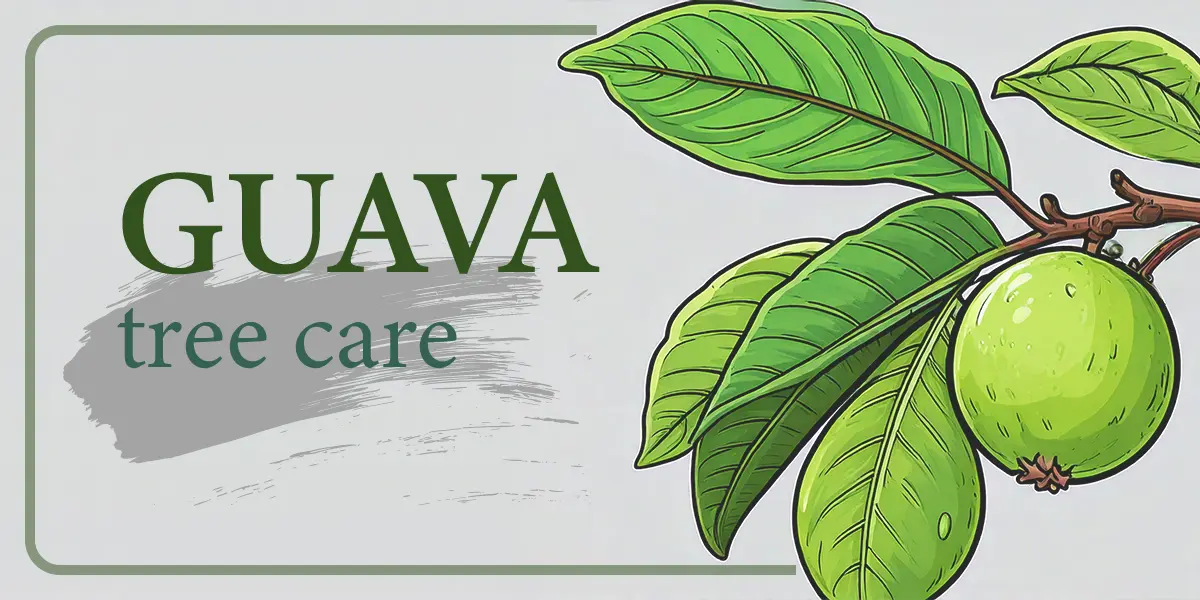Guavas are like gold at the supermarket, if your local market even carries them.
They’re small, tasteless, and so costly, you may think you wandered into Harrods by mistake.
Anyone who has sampled a ripe guava fresh off the tree will forever be on a quest for another — a quest as “fruitless” as the search for The Holy Grail, unless you’re in the guava zone like Southern Mexico. The supermarket will always disappoint. Guavas picked gween are never gweat.
But did you know that in Southern California’s forgiving climate, you can grow guavas to perfection in your backyard, thereby achieving guava nirvana?
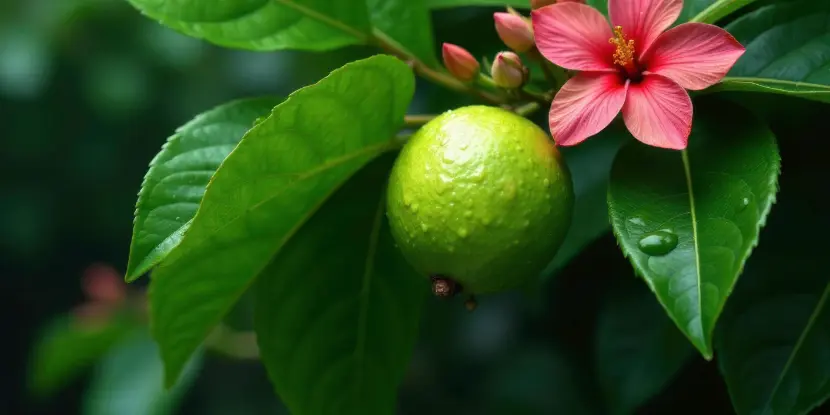
A guava fruit ripens on the tree.
Origins of the Guava Tree
Guava trees (genus Psidium, typically Psidium guajava) are native to Central America, South America, and the Caribbean. These tropical trees are well-suited to Mediterranean climates with their warm days, mild winters, and minimal frost.
The trees bear vibrant green leaves, fragrant flowers, and pear- or round-shaped fruits ranging from green to yellow to pink. A well-tended tree can live for over 40 years.
Fun fact: Guava wood is tough and dense, and resistant to scratches, wear, and decay. This makes it ideal for tool handles, bows, and even furniture.
Best Guava Varieties for California
For your Southern California garden, consider the following varieties:
- Tropical White Guava has creamy white flesh and a sweet flavor. It’s highly productive in warm-weather areas.
- Ruby Supreme Guava features sweet, pink flesh and is a favorite for fresh eating and juicing.
- Lemon Guava (Psidium cattleianum) produces small but flavorful guavas. These guavas have a tangy, citrus-like taste and are perfect for snacking.
- Pineapple Guava (Feijoa sellowiana) is technically a relative, not a true guava. This variety is excellent for cool Mediterranean climates and boasts a unique, pineapple-like flavor.
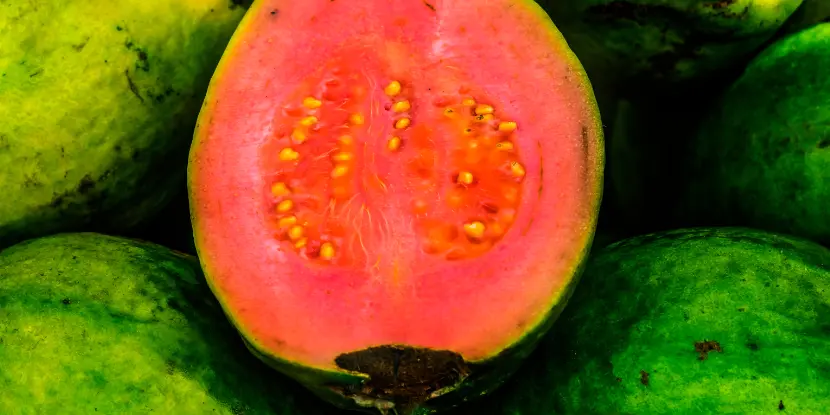
Pink Ruby guava is a favorite for fresh eating and juicing.
Optimal Growing Conditions for Guava Trees
Light
- Guava trees need at least 6–8 hours of direct sunlight daily to produce fruit.
Temperature Range
- Guava trees prefer temperatures between 65°F and 85°F.
- They can tolerate temperatures as low as 30°F, but prolonged frost will damage them.
- If frost is a concern, consider dwarf varieties or grow guava trees in containers that can be moved indoors.
Soil
- Guavas thrive in well-draining, slightly acidic to neutral soil with a pH range of 5–7.
- Amend clay-heavy or overly sandy soils with organic compost to improve structure and drainage.
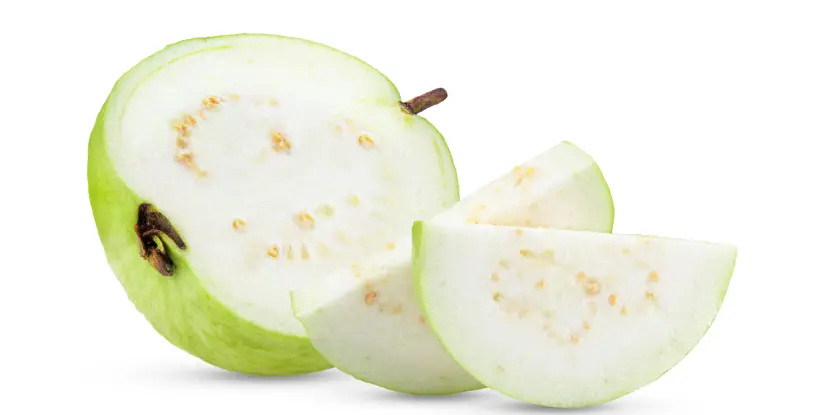
Tropical White guava is highly productive in warm-weather areas.
Propagating Guava Trees
Guavas can be propagated through seeds or cuttings, but grafted or air-layered trees are the best choice for quicker fruit production.
- Seeds: Slow to mature, taking up to 4–6 years to bear fruit.
- Cuttings & Grafts: Mature more quickly, producing fruit in 2–3 years.
Local plant nurseries often sell grafted guava saplings for new gardeners.
Steps for Planting a Guava Tree
Planting your guava tree correctly gives it a strong start.
- Pick a location with full sun and protection from strong winds.
- Dig a planting hole twice as wide as the root ball and equal in depth.
- Mix in compost with the existing soil to improve nutrients.
- Place the tree in the hole so that the top of the root ball is level with the soil surface.
- Fill the hole gently, tamping the soil to eliminate air pockets.
- Water immediately after planting to help the soil settle.
- Apply a 2–3 inch layer of organic mulch around the base to retain moisture and regulate soil temperature.

Pineapple guava is a relative, not a true guava. It does well in cool Mediterranean climates.
Guava Tree Care
Water
- Guavas need deep watering once a week during dry periods.
- Overwatering can lead to root rot. Ensure the soil drains effectively.
Fertilizer
- Use a balanced fertilizer (10-10-10) every 6–8 weeks during the growing season.
- For younger trees, apply small amounts of nitrogen-rich fertilizer to encourage leafy growth.
Pests and Diseases
- Common pests include aphids, mealybugs, and fruit flies. Use insecticidal soap or introduce beneficial insects like ladybugs to control infestations.
- Watch for anthracnose and other fungal diseases. Prevent these by pruning for airflow and avoiding overhead watering.
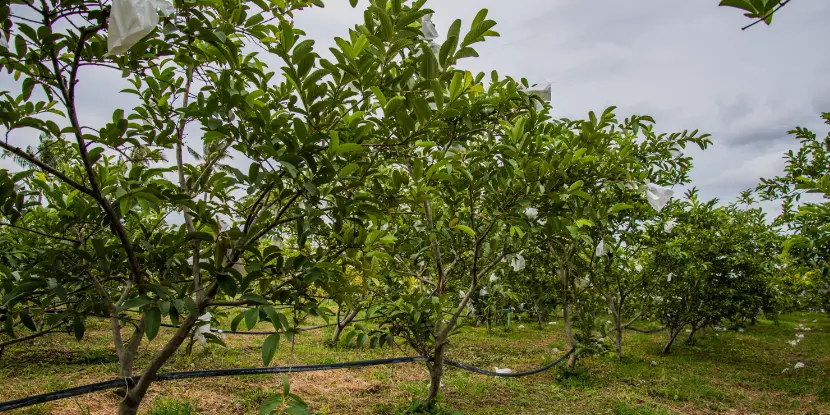
Young guava trees in an orchard.
Frost Protection
- Cover young trees with frost cloth or burlap during cold nights.
- Mature trees can survive light frost, but wrapping trunks in burlap adds extra protection.
Pruning
- Prune guava trees annually in late winter or early spring to encourage healthy growth and improve fruit production.
- Remove weak, dead, or crossing branches to shape the tree.
Harvesting Guavas
- For newly planted guava trees, expect your first harvest about 2–4 years after planting.
- Mature trees usually take 90–120 days from bloom to produce ripe fruit.
- Ripe guavas are slightly soft to the touch and emit a strong, sweet fragrance.
Pro tip: Harvest guavas frequently. They ripen quickly and may attract birds or other animals.
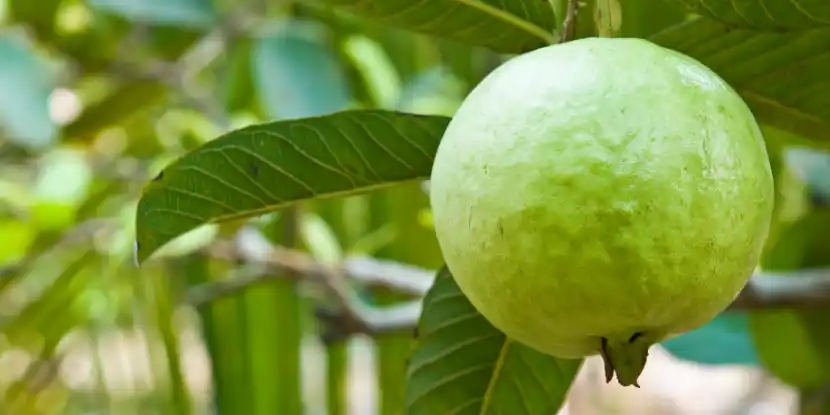
A large ripe guava ready for picking.
FAQs: Guava Tree Care
Q: When is the best time to plant guava trees?
Spring or early summer, once all danger of frost has passed.
Q: How tall do guava trees grow?
Most guava trees grow 10–20 feet tall, but dwarf varieties stay closer to 6–8 feet.
Q: Do guava trees need a lot of water?
Guava trees are drought-tolerant once established but prefer consistent, deep watering during the growing season.
Q: Why aren’t my guavas ripening?
Insufficient sunlight or inconsistent watering might delay ripening. Ensure your tree gets plenty of sun and moisture.
Q: Can I grow guava plants indoors?
Choose a dwarf variety and keep it in a large container near a sunny window.
Q: Is guava wood dense or soft?
Guava hardwood is dense and durable, often used for firewood and small woodworking projects.
Q: Are guava flowers fragrant?
Guava flowers are mildly fragrant and attract pollinators like bees and butterflies.
Q: When is the right time to prune my guava tree?
Late winter, before new growth begins, is the best time to prune.

